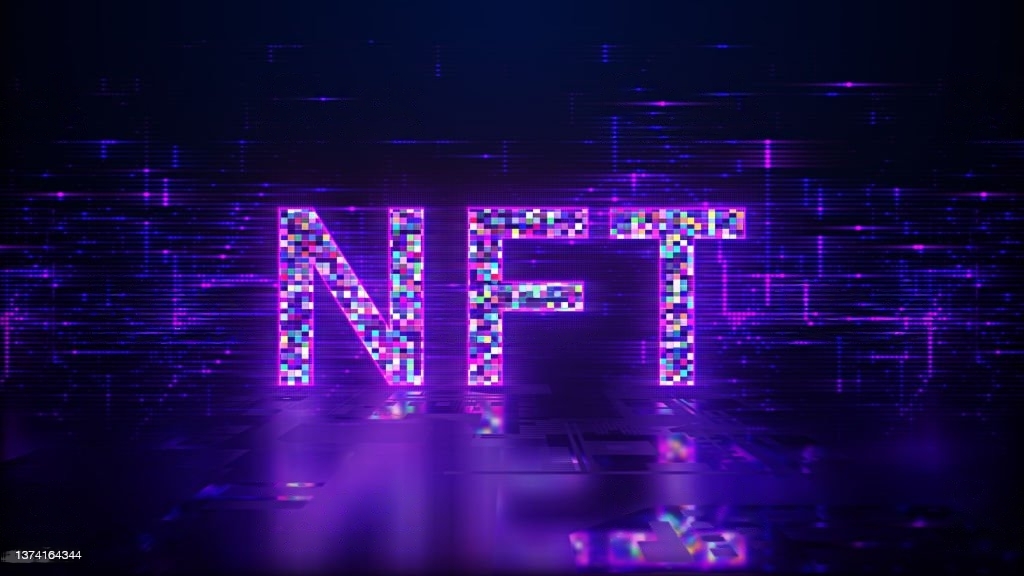Minting NFTs: A Deep Dive into the Process
 Rufina Uche
Rufina Uche
1.0. Overview
Minting NFTs is a popular way for artists, musicians, and other creators to monetize their work. But what exactly is an NFT, and how do you mint one? In this article, we’ll take a deep dive into the process of minting NFTs, how it works and the steps involved. Whether you’re an artist looking to monetize your work or just curious about the world of NFTs, this article will provide you with a comprehensive guide to the process of minting NFTs.
2.0. Introduction to NFTs
An NFT, or non-fungible token, is a unique digital asset that is stored on a blockchain. Unlike cryptocurrencies like Bitcoin, which are fungible and interchangeable, NFTs are one-of-a-kind and cannot be replicated. NFTs can represent anything from digital art and music to virtual real estate and in-game items. The ability to create and sell NFTs has opened up new opportunities for artists, musicians, and other creators to monetize their work.
The process of minting an NFT involves creating a unique digital asset and uploading it to a blockchain. Once the NFT is minted, it can be sold or traded on various marketplaces like OpenSea or SuperRare. Minting an NFT can be a complex process, but it’s an important step for anyone looking to monetize their digital creations.
2.1. Components of an NFT
Metadata: The information that describes the NFT. It can include things like the name of the NFT, the artist who created it, and a description of the asset.
Token ID: A unique identifier that distinguishes one NFT from another. This is what makes NFTs non-fungible and ensures that each one is unique.
Ownership: This determines who owns the NFT and who has the right to sell or trade it. It is managed on the blockchain using smart contracts, which are self-executing contracts that automatically enforce the terms of an agreement.
Together, these three components make up an NFT. They are stored and managed on the blockchain, which ensures that each NFT is unique and cannot be replicated.
3.0. Minting the NFT
3.1. Choosing a Platform for Minting
Various blockchain networks and marketplaces offer NFT minting services, each with its own features, community, and fees. Ethereum is a popular choice due to its wide adoption and robust NFT ecosystem, but other blockchains like Binance Smart Chain, Solana, and Flow are gaining traction. Carefully assess the platform's user interface, gas fees, supported assets, and compatibility with your intended use case.
Each blockchain network comes with its own set of benefits and drawbacks:
Ethereum: Established ecosystem, extensive support, and a wide range of marketplaces. However, high gas fees and scalability challenges can hinder accessibility.
Binance Smart Chain: Lower fees and faster transactions, but concerns about centralization and security.
Polygon: Scalability improvements over Ethereum, cost-effective transactions, and growing adoption. Still, it's newer compared to Ethereum and BSC.
3.2. Creating Metadata
The metadata provides vital information that potential collectors and enthusiasts seek. It is a narrative that adds context, value, and allure to your NFT. The components of the metadata are:
Name: The title of your creation e.g. Celestial Dreams
Description: A vivid and concise narrative that provides insights into the inspiration, concept, and significance of your NFT.
Image: The visual representation that captivates viewers and sets the tone for your NFT.
Attributes: Unique characteristics that make your NFT stand out, such as rarity, edition, and traits.
External Links: Links to your portfolio, social media, or additional information that enhances the backstory of your creation.
We can create the metadata like this:
const metadata = {
"name": "Celestial Dreams",
"description": "An ethereal depiction of cosmic wonders, where stars dance in a celestial ballet. The interplay of light and color evokes a sense of wonder and exploration.",
"image": "https://www.example.com/celestial_dreams_image.jpg",
"attributes": [
{"trait_type": "Edition", "value": "Limited Edition"},
{"trait_type": "Rarity", "value": "Rare"},
{"trait_type": "Feature", "value": "Stellar Glow"}
],
"external_links": [
{"name": "Instagram", "link": "https://www.instagram.com/ArtistDreams"},
{"name": "Portfolio", "link": "https://www.artistportfolio.com"}
]
}
Note: The image in the metadata is usually a thumbnail or preview of the NFT. The actual NFT art is stored on the blockchain and can be accessed using the token ID.
3.3. Uploading Your NFT
Next, you need to connect your digital wallet to the chosen blockchain network. This wallet will serve as your gateway to interact with the blockchain and execute transactions:
const Web3 = require('web3');
const blockchainProvider = 'https://example-blockchain-network.com'; // Replace with your network's provider URL
const web3 = new Web3(new Web3.providers.HttpProvider(blockchainProvider));
if (web3.currentProvider.connected) {
console.log('Wallet connected to the blockchain network.');
} else {
console.log('Wallet connection failed.');
}
3.4. Access the Smart Contract
Accessing a smart contract involves interacting with the blockchain using its address and ABI (Application Binary Interface) to invoke functions and read data from the contract. Here's how you might do it using the Web3 library in JavaScript:
// Define the smart contract's address and ABI
const contractAddress = '0xYourContractAddress'; // Replace with your contract's address
const contractABI = require('./NFTContractABI.json'); // Load the NFT smart contract ABI
;
// Create an instance of the smart contract using its address and ABI
const contractInstance = new web3.eth.Contract(contractABI, contractAddress);
3.5. Initiate Minting
After connecting your wallet and accessing the smart contract, you would invoke a minting function provided by the NFT smart contract:
const Web3 = require('web3');
const privateKey = 'YOUR_PRIVATE_KEY'; // Your private key
const providerURL = 'PROVIDER_URL'; // URL of your Ethereum provider
async function mintNFT() {
const account = web3.eth.accounts.privateKeyToAccount(privateKey);
web3.eth.accounts.wallet.add(account);
const tokenIdToMint = 1; // Token ID to mint
const gasPrice = await web3.eth.getGasPrice();
const gasEstimate = await contractInstance.methods.mint(tokenIdToMint, JSON.stringify(metadata))
.estimateGas({ from: account.address });
const transactionData = nftContract.methods.mint(tokenIdToMint, JSON.stringify(metadata))
.encodeABI();
const tx = {
from: account.address,
to: contractAddress,
gas: gasEstimate,
gasPrice: gasPrice,
data: transactionData,
};
const signedTx = await web3.eth.accounts.signTransaction(tx, privateKey);
const receipt = await web3.eth.sendSignedTransaction(signedTx.rawTransaction);
console.log('NFT minted successfully with transaction hash:', receipt.transactionHash);
}
mintNFT();
This function would create a new NFT and assign it to your wallet's address. This code uses the OpenSea SDK to mint an NFT. You’ll need to replace the API key and asset contract address with your own values.
3.6. Gas Fees
Blockchain networks operate based on transactions, and executing these transactions incurs gas fees. Gas fees are used to prioritize and process transactions on the network so when minting your NFT, you'll need to pay these fees to cover the computational resources required for the minting process. The exact fee amount can vary depending on factors such as network congestion and the complexity of the transaction.
3.7. Confirmation
After submitting your minting request and paying the gas fees, you'll need to wait for the blockchain network to validate and confirm the transaction. This confirmation ensures that your NFT has been successfully minted and added to the blockchain.
You can use blockchain explorers, online tools that allow you to search for specific transactions and addresses on the blockchain, to verify that your NFT has been minted and is now available on the blockchain.
4.0. Best Practices for Minting NFTs
Metadata Accuracy: Craft precise and authentic metadata to enhance the uniqueness of your NFT. Avoid errors and inaccuracies that could affect its marketability.
Gas Fee Optimization: Research and choose appropriate gas fees for cost-effective transactions. Employ gas optimization techniques to minimize costs.
Error Management: Implement error handling to gracefully manage transaction failures and unexpected scenarios during minting.
Thorough Testing: Test your minting process on test networks before deploying to the mainnet to identify and address potential issues.
Stay Updated: Keep up with blockchain advancements and updates that could impact your minting process.
5.0. Use Cases
NFTs have transcended art, influencing various domains. Digital Art benefits from NFTs as certificates of authenticity and revenue sources for artists. Gaming sees true ownership of in-game assets, fostering inter-game interactions. Collectibles digitize trading cards and more, introducing digital scarcity.
Music and Entertainment industries offer exclusive content to fans. In Real Estate, NFTs enable property fractional ownership. Fashion integrates NFTs for authenticity, and Education validates certifications. Virtual Worlds emerge with NFT-based virtual asset ownership.
These instances underscore NFTs' transformative potential across diverse sectors, redefining ownership, value, and interactions, reshaping industries in various ways.
6.0. Conclusion
In this article, we’ve delved into the step-by-step process of creating these unique digital assets, from crafting accurate metadata to connecting wallets, deploying smart contracts, and initiating the minting process.
Understanding the underlying process not only empowers creators to mint their digital creations but also offers collectors insights into the effort behind each NFT. With this knowledge in hand, I encourage you to embark on your NFT journey, experiment with the technology, and become a part of the world of blockchain-enabled digital ownership.
Subscribe to my newsletter
Read articles from Rufina Uche directly inside your inbox. Subscribe to the newsletter, and don't miss out.
Written by
